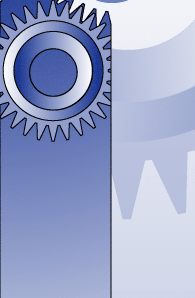Frequently Asked Questions
Q: Are powdered metal parts as strong as wrought parts?
Q: Can powdered metal parts hold close tolerances?
Q: Are there numerous operations that have to be performed to P/M parts after they are made to ensure that they meet print requirements?
Q: Can P/M produce high volume?
Q: What is a self lubricating bearing?
Q: Why choose a P/M gear over a wrought gear?
Q: Are powdered metal parts as strong as wrought parts?
A: Yes. Powdered metal parts either meet or exceed wrought parts, not
only in
strength but also in other physical characteristics. P/M can be
tailored to a specific
physical or metallurgical characteristic through alloying or processing.
Return to Top
Q: Can powdered metal parts hold close tolerances?
A: Yes. As a rule, the P/M process can hold closer tolerances than most
of the other metal fabricating processes. If tight tolerances are required, there are
secondary processes that can be performed to meet the specifications.
Return to Top
Q: Are there numerous operations that have to be performed to P/M parts
after they are made to ensure that they meet print requirements?
A: No. In most cases the parts are to the print after the press-sinter process. The only secondary operation may be tumbling. This is one of
the reasons that P/M is used. Parts can be made near net shape without any secondary
processing.
Return to Top
Q: Can P/M produce high volume?
A: Yes, the P/M process is a high volume process. The majority of
parts made by P/M
are used in automobile manufacturing. P/M is a high volume,
repeatable process.
Return to Top
Q: What is a self-lubricating bearing?
A: This is a P/M bearing in which the porosity in the part is
impregnated with
lubricant. When in use, the bearing heats up, and the lubricant flows to
the surface of the
bearing. When the bearing cools down, the lubricant is drawn back
into the porosity
of the part.
Return to Top
Q: Why choose a P/M gear over a wrought gear?
A: 1. Noise dampening- the controlled porosity in the P/M gear
reduces the ringing sound when two gears mesh together.
2. A wide variety of material selections are available.
3. P/M gears are made to AGMA specifications. (American Gear
Manufacturers' Association).
4. Gears can be combined with other components such as cams,
ratchets, and other gears to form a single component.
5. Tools can be made to provide consistent component
accuracy over long runs.
Return to Top







